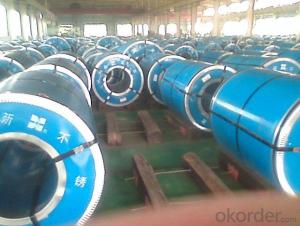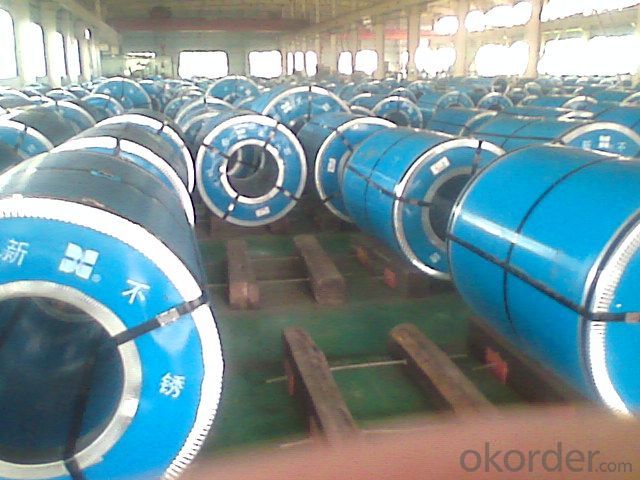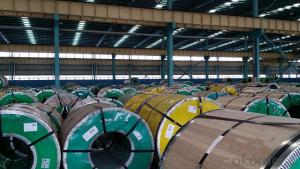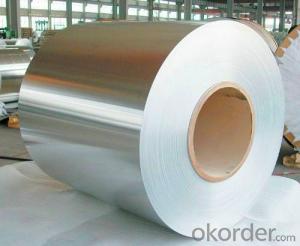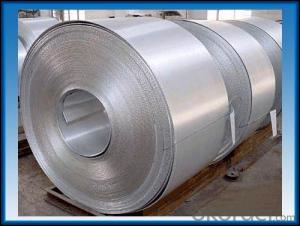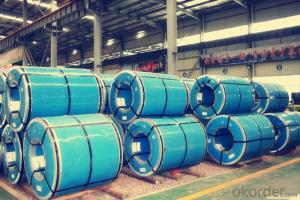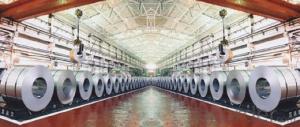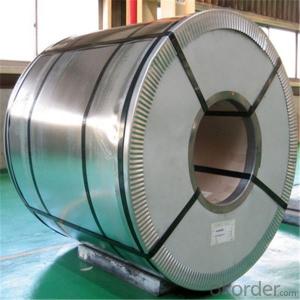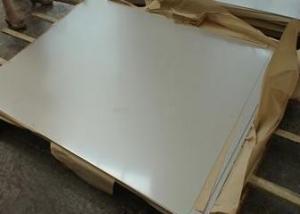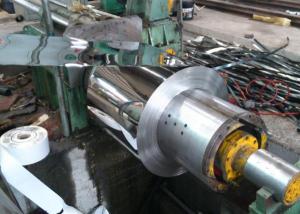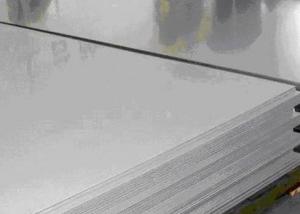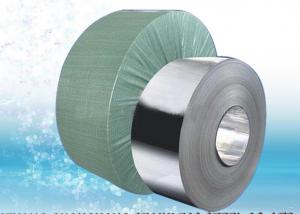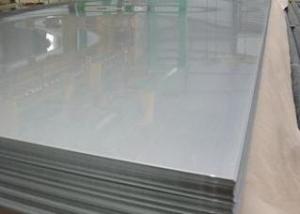Stainless Steel Coil 304 Cold Rolled BA Finish
OKorder Service Pledge
OKorder Financial Service
You Might Also Like
Stainless Steel Coil 304 Cold Rolled BA Finish
Packaging Detail:standard export packing or as customer's requirements
Delivery Detail:7-15 days after the order
MOQ: 100mt
Standard: | AISI,ASTM,BS,DIN,GB,JIS | Grade: | 304 | Thickness: | 0.3-3.0mm |
Place of Origin: | China Mainland | Brand Name: | CNBM | Model Number: | 304 |
Type: | Steel Coil | Technique: | Cold Rolled | Surface Treatment: | BA |
Application: | Medical instruments, building, chemical food industry agriculture | Width: | 500-2000mm | Length: | Coil |
finish: | BA | item: | 304 cold rolled stainless steel coil | density: | 7.93 |
Stainless Steel Coil 304 Cold Rolled 2B Finish
Chemical composition: |
| ||||||
C | Si | Mn | Cr | Ni | S | P | |
≤0.07 | ≤1.0 | ≤2.0 | 18.0~20.0 | 8.0~11.0 | ≤0.03 | ≤0.035 | |
mechanical properties: |
| ||||||
Tensile strength σb (MPa) | Conditions yield strength 0.2 sigma (MPa) | Elongation δ5 (%) | Section shrinkage (%) | Hardness | |||
520 | 205 | 40 | 60 | ≤1 | |||
- Q: Are stainless steel strips suitable for use in corrosive environments?
- Stainless steel strips are a perfect choice for use in environments prone to corrosion. The exceptional corrosion resistance properties of stainless steel have earned it a well-deserved reputation as the ultimate material for situations where exposure to corrosive elements is expected. The presence of chromium in stainless steel creates a protective layer on the surface, referred to as the passive layer, which effectively shields the metal from reacting with the surrounding environment. This passive layer acts as a strong barrier against corrosive substances like moisture, acids, and salts, considerably minimizing the risk of corrosion. Furthermore, stainless steel strips can be further fortified with various alloying elements like molybdenum or nickel to boost their resistance against specific types of corrosion. This remarkable versatility ensures that stainless steel strips remain highly dependable and durable, even in the face of highly corrosive environments such as marine settings, chemical processing plants, or coastal regions.
- Q: Can 111 stainless steel strips be coated or plated for added protection?
- Yes, 111 stainless steel strips can be coated or plated for added protection.
- Q: Can 111 stainless steel strips be hardened through heat treatment?
- Yes, 111 stainless steel strips can be hardened through heat treatment. Stainless steel strips are typically heat treated to enhance their mechanical properties, such as hardness and strength. The heat treatment process involves heating the steel strips to a specific temperature, known as the austenitizing temperature, and then cooling them rapidly, known as quenching. This quenching process helps to transform the austenitic structure of the steel into a martensitic structure, which is harder and more durable. After quenching, the steel strips may undergo further tempering, which involves reheating the steel to a lower temperature to reduce its brittleness and improve its toughness. Overall, heat treatment is an effective method to harden stainless steel strips, including those made of 111 stainless steel.
- Q: Can stainless steel strips be used in the production of oil and gas pipelines?
- Yes, stainless steel strips can be used in the production of oil and gas pipelines. Stainless steel is highly resistant to corrosion and can withstand extreme temperatures and pressures, making it a suitable material for pipelines in the oil and gas industry.
- Q: Can stainless steel strips be used in elevator doors?
- Yes, stainless steel strips can be used in elevator doors. Stainless steel is a popular choice for elevator doors due to its durability, corrosion resistance, and aesthetic appeal. It provides a sleek and modern look while also withstanding the wear and tear associated with elevator usage.
- Q: What is the thermal conductivity of stainless steel strips at different temperatures?
- The thermal conductivity of stainless steel strips varies with temperature. Generally, stainless steel has a thermal conductivity of around 15-20 W/(m·K) at room temperature. However, this value decreases slightly as the temperature increases. It is important to note that the specific thermal conductivity values can vary depending on the exact composition and grade of stainless steel used in the strips.
- Q: Can stainless steel strips be used in the production of medical instruments for sterilization?
- Yes, stainless steel strips can be used in the production of medical instruments for sterilization. Stainless steel is a popular material choice for medical instruments due to its excellent corrosion resistance, strength, and durability. It is also highly resistant to heat and can withstand the high temperatures required for sterilization processes such as autoclaving. Additionally, stainless steel is non-reactive and does not leach any harmful substances, making it safe for use in medical applications. Therefore, stainless steel strips are a suitable material for the production of medical instruments that need to undergo sterilization.
- Q: Can stainless steel strips be used for jewelry making?
- Yes, stainless steel strips can be used for jewelry making. Stainless steel is a durable and versatile material that is commonly used in the production of jewelry. Stainless steel strips can be cut into various shapes and sizes to create different jewelry components such as pendants, charms, earrings, and bracelets. Additionally, stainless steel is known for its resistance to tarnish, corrosion, and discoloration, making it an ideal choice for jewelry that is meant to be worn daily. The material is also hypoallergenic, making it suitable for individuals with sensitive skin or allergies. Overall, stainless steel strips are a reliable and cost-effective option for jewelry makers and can be used to create a wide range of stylish and long-lasting jewelry pieces.
- Q: Can stainless steel strips be used in the production of jewelry clasps?
- Yes, stainless steel strips can be used in the production of jewelry clasps. Stainless steel is a durable and corrosion-resistant material, making it suitable for various applications in the jewelry industry. It provides strength and stability to clasps, ensuring the longevity of the jewelry piece. Additionally, stainless steel's versatility allows for various designs and finishes, making it a popular choice for clasps in different jewelry styles.
- Q: Can stainless steel strips be used in power generation industries?
- Certainly! Stainless steel strips have a wide range of applications in the power generation sector. This alloy is known for its impressive resistance to corrosion and ability to withstand harsh conditions, making it a suitable material for various purposes. In power plants, stainless steel strips find their use in the construction of equipment like turbines, generators, and other components that are exposed to high temperatures, pressure, and corrosive environments. The corrosion-resistant properties of stainless steel ensure that these components remain intact and structurally sound over time. Moreover, stainless steel strips can be utilized in the fabrication of heat exchangers, condensers, and different piping systems within power plants. The excellent thermal conductivity of stainless steel allows for efficient heat transfer, making it an ideal choice for these applications. Furthermore, stainless steel's resistance to oxidation and scaling at high temperatures makes it ideal for use in boilers and steam generators, which are essential components of power generation systems. All in all, stainless steel strips offer numerous advantages, including corrosion resistance, durability, and high-temperature performance, making them a reliable option for the power generation industry.
Send your message to us
Stainless Steel Coil 304 Cold Rolled BA Finish
OKorder Service Pledge
OKorder Financial Service
Similar products
Hot products
Hot Searches
Related keywords
